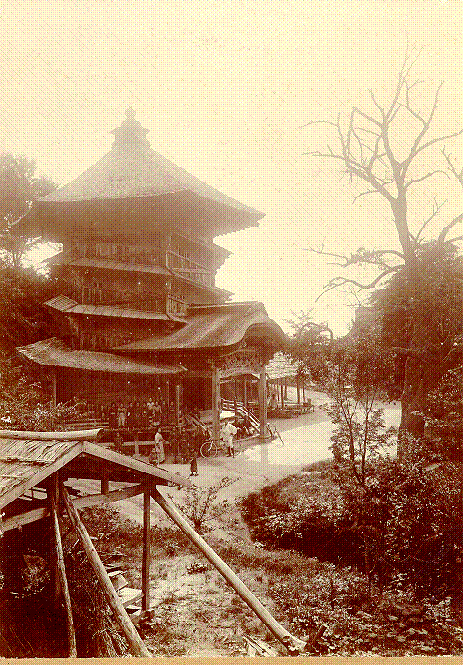SAZAEDŌ
|
Aizu-Wakamatsu, Fukushima Prefecture, Japan
| |

|
|
|
The unique interior structure of the pagoda
formally called Entsū Sansōdō
has given the building its popular name Sazaedō--Turbo Hall, after the
spiral chambered interior of the shellfish.
The name does not quite do justice to the building's architectural
uniqueness: in fact, the interior
is formed of two spiral ramps entwined like a double helix. In the Edo
period, when Sazaedō was opened, pilgrims could ascend one ramp and descend
the other in a steady stream, without collision or confusion.
|
|
We have constructed a computer model of Sazaedō. A
presentation
showing its features can be seen here. |
|
Click on the picture
to see an animated view of the basic
structure (2.5 Meg).
| |
A virtual reality walkthrough
of the model has been prepared from a large number
of renderings based on the model.
A more recent walkthrough has been made available on youtube
Uwalkthrough
Discussion continues below.
|
|
| Sazaedō in the Taishō period (1912-1924)
|
A visit to Sazaedō replicated two seminal experiences in the life of
the pious Buddhist: climbing a sacred mountain, and following a pilgrimage
route to a chain of holy sites. Both experiences required far more time
and effort than most poor people could afford. A visit to Sazaedō, however,
collapsed these experiences into an afternoon. At the entrance to Sazaedō--the
bottom of the artificial holy mountain--pilgrims first encountered an image
of Amida Buddha; then, on the way up and down the double-helix ramp, they
could venerate 33 small images of the bodhisattva Kannon, placed in chambers
at every turn of the walkway. The images were replicas of the 33 Kannon
images on housed at separate temples along the Saikoku (Western Japan)
pilgrimage route, and if Sazaedō practice followed the practice of conflated
pilgrimage routes elsewhere, visiting Sazaedō was considered the equivalent
of a Saikoku pilgrimage.
Recently declared a National Important Cultural
Property, Sazaedō commemorates the vigor of popular Buddhism in the Edo
period.
We have constructed a
computer model of Sazaedō.
For a look at the early construction process,
click here.
For some more
on Sazaedō's history, click here.
For a view
of a 19th-century document concerning Sazaedō, click here.
For sources on Sazaedō,
click here.

